A fact sheet to support the Soil CRC’s ‘Managing Soil Constraints’ webinar, delivered as part of our ‘Building technical capacity for improved soil management’ webinar series.
In this webinar, Dr Ehsan Tavakkoli, formerly with NSW Department of Primary Industries (now with the University of Adelaide) provides a deep dive into:
- how soils become sodic and how sodicity limits crop yields
- identifying and managing sodic soils comparing a range of novel amendment methods to improve soil structure and overcome soil constraints for improved plant productivity.
Soil constraints are not often found in isolation, for example poorly structured soils may have salinity, sodicity, pH constraints and compaction impacting crop growth.
Difference between saline and sodic soils
Saline soils have excessive levels of soluble salts in the soil solution. In contrast, sodic soils have excessive sodium ions relative to other cations bound to clay particles. The sodium weakens the bonds between clay particles when wet. In sodic soils, the sodium is no longer soluble. Sodic soils can experience soil structural issues, including crusting and reduced water infiltration. Adding amendments like gypsum can help improve soil structure in sodic soils, the calcium in the gypsum displaces the sodium into the soil solution.
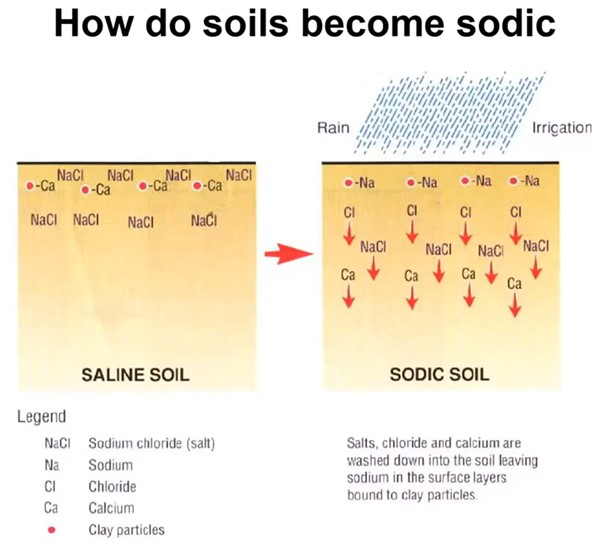
Identifying and managing sodic soils
To identify sodicity in the field, a simple test using a petri dish, clean rainwater, and soil aggregates can be performed. If the soil disperses after an hour, sodicity is present. However, it is essential to understand that sodicity is a general term, and it is the dispersion that matters. Soil testing in the lab can determine the amount of gypsum required to improve the sodic soil, but a comprehensive understanding of soil variability is necessary for effective management.
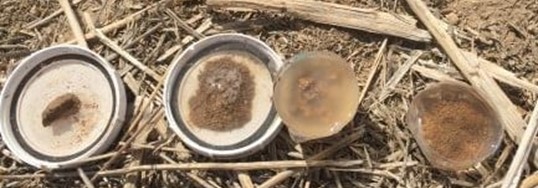
Example of soil dispersion and slaking (from left to right: intact soil ped, slaked soil ped, dispersed soil ped, slaked soil ped)
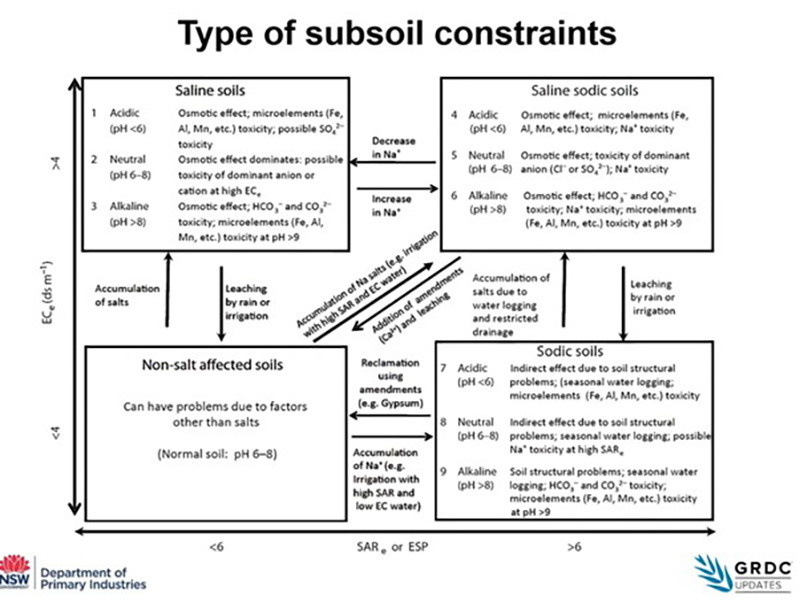
The aim of management is to improve water use efficiency by enhancing the plant’s access to water in the soil profile. Knowledge of the upper and lower water limits throughout the soil profile is crucial to understanding the plant’s access to water and yield potential.
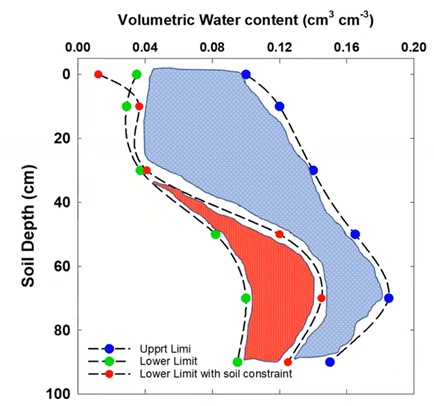
Management options include addition of organic amendments to ameliorate the soil, improve plant genetic tolerance to constraints and innovative amendments with improved formulations.
Effects of organic amendments and gypsum on soil and crop
Dr Tavakkoli provided a summary of replicated soil amelioration trials which found the deep placement of organic amendments and gypsum significantly increased crop yield and improved root growth, infiltration rate, and crop water use in medium to high rainfall zones.
Both gypsum and organic carbon amendments used together significantly increased yield, improved root growth in the subsoil, increased water infiltration and improved crop water use. This addressed multiple soil constraints, including dispersion, and poor structure.
Management is expensive, and decisions should be based on minimising risk and maximising returns on investment over a number of years.
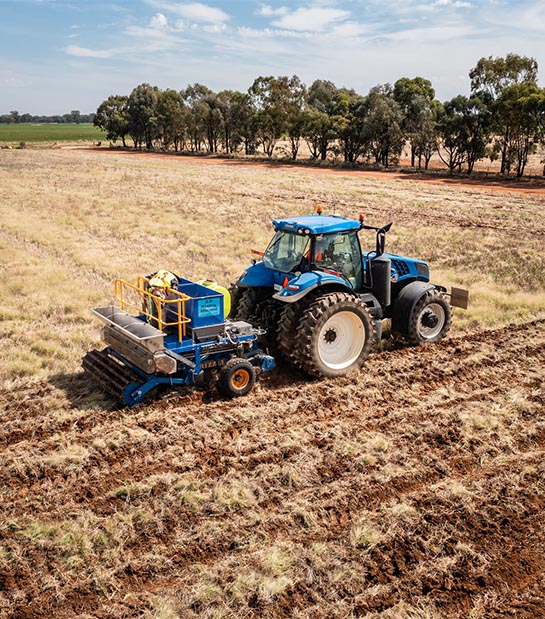
Related Soil CRC projects
- Project 3.3.002 New products for subsoil constraints
- Project 4.2.002 Addressing complex soil constraints
- Project 4.2.003 Overcoming soil constraints in highly calcareous soils
Further information
- Soil CRC project update: New products for subsoil constraints
- New products for subsoil constraints Soil CRC Webinar
- Video: Soil CRC Gypsy Calculator Decision Support Tool
- Paper: Amelioration of hostile subsoils via incorporation of organic and inorganic amendments and subsequent changes in soil properties, crop water use and improved yield, in a medium rainfall zone of south-easternAustralia (GRDC)
- GRDC Soils Extension — FarmLink Research
- Soil compaction, DPIRD WA
- Soil Science Australia soil resources
- Soil sodicity, Queensland Government
- Soil Quality: 8 Sodic and Alkaline Soil (SoilsWest) – available on Apple Books
- Soil Quality: 1 Constraints to Plant Production (SoilsWest) – available on Apple Books
Acknowledgement
This webinar was recorded in 2020 as part of the ‘Building technical capacity for improved soil management’ webinar series. It was produced by the Soil CRC and jointly funded through the Australian Government’s National Landcare Program.
Posted Apr 18, 2024

